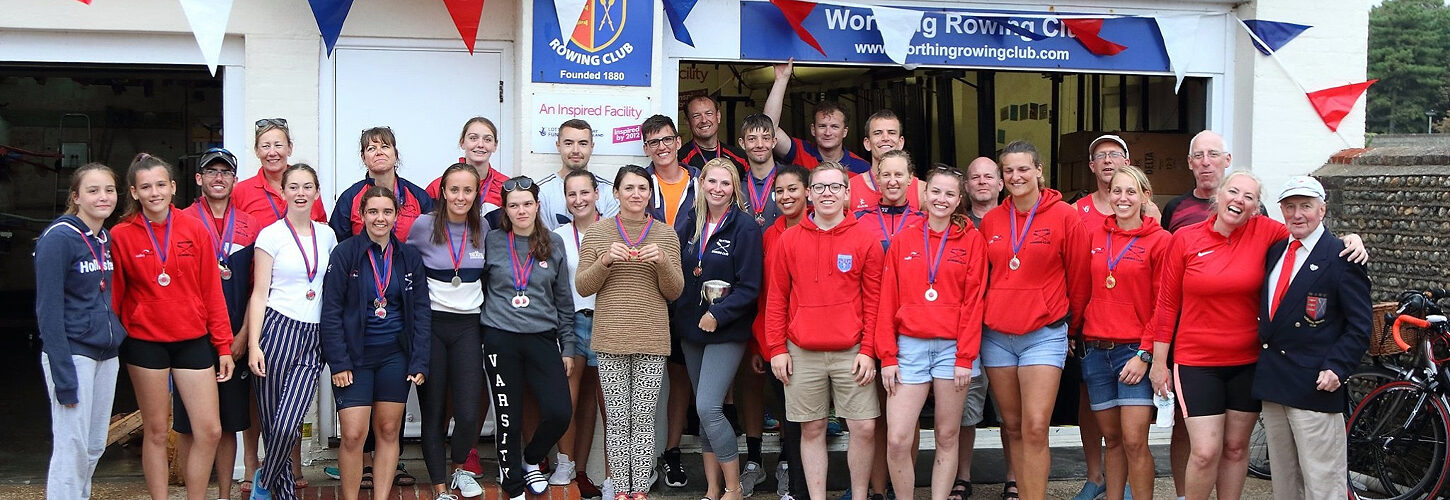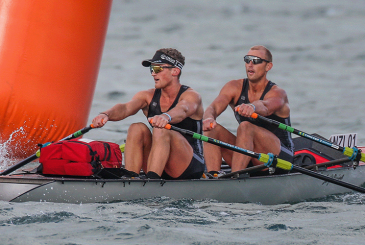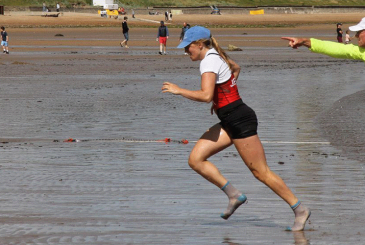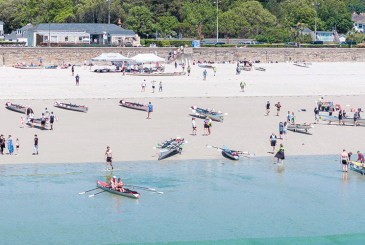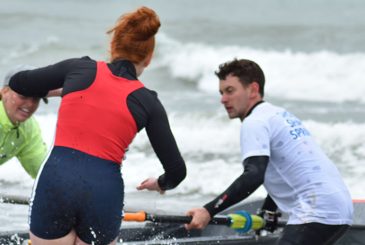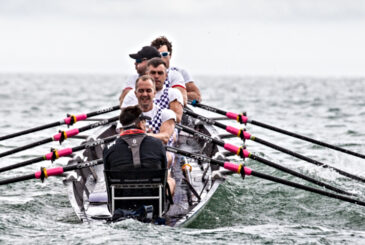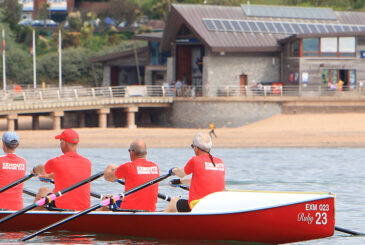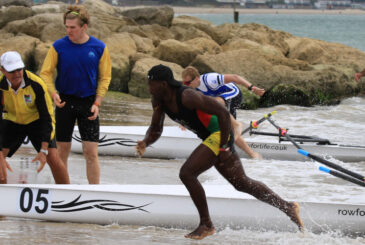After moving to Worthing, Toby Bryant swapped river rowing for coastal and is fast becoming hooked on this side of our sport
For many rowers, the coastal version of the sport is like the long-lost cousin you hear about, but never see.
I certainly had no idea what to expect when joining Worthing Rowing Club (WRC) earlier this year, having only turned to the coastal world as a result of moving to the South Coast for work.
Now, whilst I still carry the happy memories of my river rowing past in my mind – and think back to them ever more fondly when a wave from the freezing English Channel washes over the whole boat – I’ve begun a love affair with the lesser-known rowing discipline.
WRC Captain Emily Gurney has been in the sport since the age of 13 and says the battering sessions are all worth it for “the great sense of atmosphere and community” in the discipline.
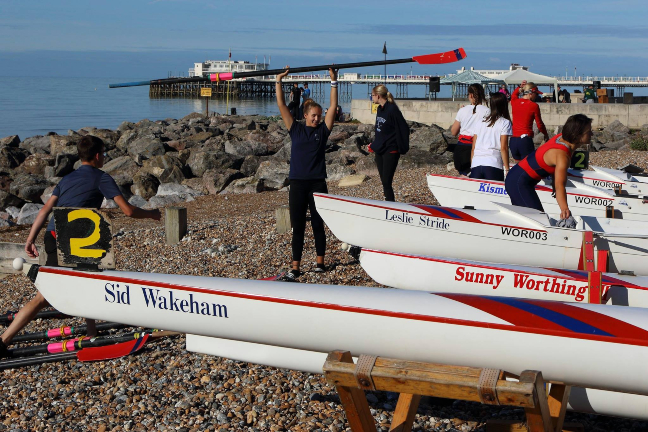
She said: “Coastal rowing can be more challenging at times due to the weather and rough waters, but this just makes it more fun!
“WRC has always had a great sense of atmosphere and community – we have a range of ages from vet crews to juniors and anything in between.
“The club has welcomed me with open arms”
“As a small club you get to know the members very well and you quickly become a part of the rowing family.”
That’s something I can certainly vouch for.
Having joined WRC in March, I’ve seen the club slowly whirr back to life after lockdown. You row indoors side-by-side with any member of the squad, no matter their age or experience, and members muck in when it comes to helping one another get out on the water.
The club has welcomed me with open arms, but it’s not always been an easy transition from the river world.
When I was first shown around the boathouse, I baulked at the width of the boats and the chunky rudders about five times the size of sleek river shells. The thought of lugging those big boys across the English Channel waves made the Tideway seem a breeze.

Despite my first impressions, I was soon glad of the boat structure as the size helps find a tiny bit of balance when out on the sea. When the water is flat, it’s just like the river. When it’s not, then even rowers with the best technique would struggle to keep their blades off the water.
Other differences that shocked me when moving from the river world included boating by wading out to my waist in the sea and just how much more physical water sessions are as a result of having to battle the choppy waters.
For those living near the coast, giving the sport a go is a must, especially at a time when interest will be high after the Olympics. Getting in touch via clubs’ official websites is normally the best bet and it’s worth keeping an eye out for dedicated Learn to Row weeks which happen frequently.
Dawn Smith is one of our new recruits at Worthing who tried one of the recent Learn to Row courses.
She said: “I had only been out on in small boats twice. Once was as a child on a day trip to the South Coast; I think the boat may have been shaped like a swan!
“The other was on a London pond aged 15, trying to splash the local heart-throbs, as a mating ritual, in the ancient days before social media dating.”
With lockdown frustration rowing through her veins, Dawn came down to Worthing and was soon getting to grips with the ergo and discovering “a long-neglected part of my anatomy I found was called my core!”.
Dawn reflected on her first taste of the sport: “It was inspirational to see fun, fit and smiling young women taking the lead and I completely admired their skill and enthusiasm.
“I have been out on the water and loved every minute of the training and have at last found a sport I enjoy.”
What’s more, the fabulous Dawn is proud to admit she’s ‘60+ years old’, “coastal rowing is a sport suitable for all ages,” she adds.
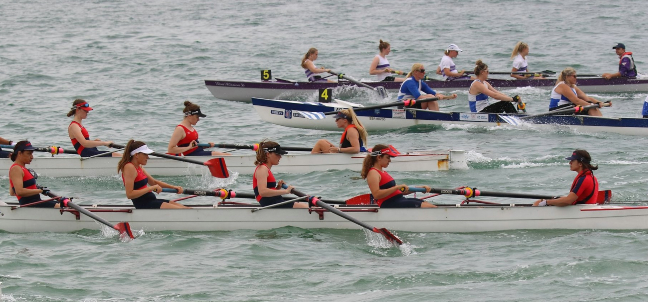
There’s more to coastal rowing than what we have going on at Worthing too. The Coastal Amateur Rowing Association (covering Kent and Sussex) and the Hants and Dorset Amateur Rowing Association are the governing bodies that look after south coast rowing.
The boats used in these events are the ones we have in Worthing, just like river boats, but bulked up to cope with the sea.
There’s also FISA, or World Rowing, who look after the perhaps better known global events such as the World Rowing Coastal Championships and World Rowing Beach Sprint Finals. The World Rowing standard coastal boats are significantly wider than fine boats and even the coastal boats used by clubs on the South Coast. These boats are designed to withstand rougher sea conditions which give this form of rowing a more extreme challenge than that of its river cousins.
Many clubs and rowers based in the South West of England and Channel Islands are adopting the FISA standard sliding seat boats. The boat categories include singles, doubles and quads. The standardisation of the boats has allowed a resurgence in competition on coastal waters around the world.
Gig rowing is another form of our sport taking part around our coastline and also on rivers. Participants sit on stationary seats and work with what could be seen as more old-fashioned oars. All modern racing gigs are based on the Treffry, built in 1838 by William Peters and still owned and raced by Newquay Rowing Club.
Anne Curnow Care, Secretary to the Cornish Pilot Gig Association, said: “Gig rowing is an accessible and affordable way to get on the water. The 32-foot traditional wooden pilot vessel is at the heart of sport and our communities. It really is a sport for everyone and is run entirely by volunteers.”
Whatever the boat you end up in looks like, it’s long overdue for river rowers to spend time getting acquainted with the coastal world. Like me, you may find yourself becoming addicted.
Fancy giving coastal rowing a go?!
If you’d like to follow in Toby’s footsteps and give coastal rowing a go then a great starting point is to look at Positive Float Coastal Rowing’s website. This resource has been created to help share information on clubs, events, equipment and potential rowing locations around the UK. Founder Tim Fenemore says that they are seeing a growing number of people trying coastal rowing from complete beginners, who find the boats very stable and accessible, to high performing fine boat athletes who just want to try something new.
Or, if you’re within reach of the South Coast, then Row for Life at the Coastal Rowing Centre in Studland would be a great option. The boats (Liteboats) are much more stable than fine river singles, allowing newer rowers to gain confidence and develop skills without the fear of capsizing. Find out more here.
Photos: Joel Dinning


